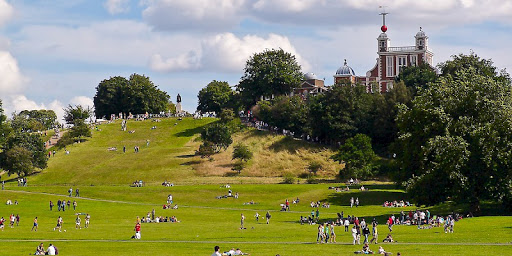Every day for 30 days we will be featuring a museum object that has inspired or intrigued us, in the hope that “an object a day keeps the doctor away.” We love creating exciting, meaningful storytelling through engaging experiences, but still firmly believe that it is hard to beat the thrill of being in the presence of authentic artefacts. Today’s object is: view of the Royal Observatory.

And so we end where we began … in Greenwich. Where time began.
Not literally, of course. That’s a bit like saying the British invented gravity. But the prime meridian (from which all time is measured) was first set at the Royal Observatory in 1721 and became the internationally recognized meridian in 1884.
Founded for navigational purposes in 1675 by King Charles II (1630-85), by the time of its closure as an active observatory in 1998, the Royal Observatory was the oldest scientific research institution in Great Britain. Its primary contributions were in practical astronomy — navigation, timekeeping, determination of star positions, and almanac publication. The astronomer in charge was given the title of Astronomer Royal, the first of which was John Flamsteed (1646-1719) who held the post for a remarkable 42 years.
The Royal Observatory has played a major role in the history of astronomy and navigation since the 17th century including the quest for longitude. Due to the prime meridian passing through it, it gave its name to Greenwich Mean Time.
That bright red Time Ball that you see on top of Flamsteed House is one of the world’s earliest public time signals, distributing time to ships on the Thames and many Londoners. It was first used in 1833 and still operates today. Normally each day, at 12.55, the time ball rises half way up its mast. At 12.58 it rises all the way to the top. At 13.00 exactly, the ball falls, and so provides a signal to anyone who happens to be looking.
Growing up in nearby Blackheath, many Sundays were spent in Greenwich Park. What I particularly love about this photo is that the view of the Royal Observatory and park has pretty much stayed unchanged since the late 18th century (with the addition of the shrapnel pock-marked statue of General Wolfe in 1930).
The Royal Observatory is currently closed. Check website for details.
